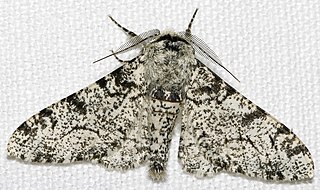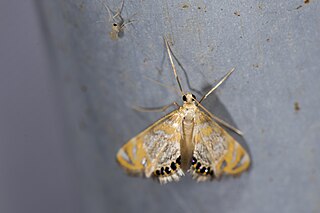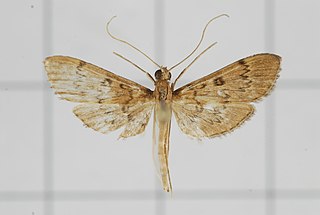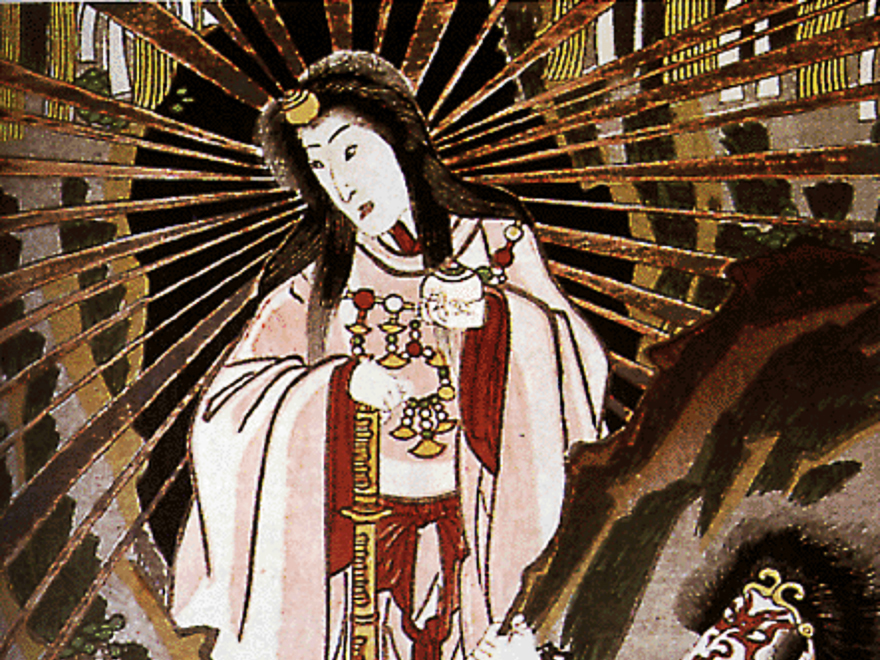
Butterflies are insects in the macrolepidopteran clade Rhopalocera from the order Lepidoptera, which also includes moths. Adult butterflies have large, often brightly coloured wings, and conspicuous, fluttering flight. The group comprises the large superfamily Papilionoidea, which contains at least one former group, the skippers, and the most recent analyses suggest it also contains the moth-butterflies. Butterfly fossils date to the Paleocene, about 56 million years ago.

Lepidoptera is an order of insects that includes butterflies and moths. About 180,000 species of the Lepidoptera are described, in 126 families and 46 superfamilies, 10 per cent of the total described species of living organisms. It is one of the most widespread and widely recognizable insect orders in the world. The Lepidoptera show many variations of the basic body structure that have evolved to gain advantages in lifestyle and distribution. Recent estimates suggest the order may have more species than earlier thought, and is among the four most speciose orders, along with the Hymenoptera, Diptera, and Coleoptera.

Moths are a paraphyletic group of insects that includes all members of the order Lepidoptera that are not butterflies, with moths making up the vast majority of the order. There are thought to be approximately 160,000 species of moth, many of which have yet to be described. Most species of moth are nocturnal, but there are also crepuscular and diurnal species.

Inuyasha is a Japanese manga series written and illustrated by Rumiko Takahashi. The series begins with Kagome Higurashi, a fifteen-year-old middle school girl from modern-day Tokyo who is transported to the Japanese era of Sengoku period after falling into a well in her family shrine, where she meets the half-dog demon, half-human Inuyasha. After the sacred Shikon Jewel re-emerges from deep inside Kagome's body, she accidentally shatters it into dozens of fragments that scatter across Japan. Inuyasha and Kagome set to recover the Jewel's fragments, and through their quest they are joined by the lecherous monk Miroku, the demon slayer Sango, and the fox demon Shippo. Together, they journey to restore the Shikon Jewel before it falls into the hands of the evil half-demon Naraku.

Laputa: Castle in the Sky, known as simply Castle in the Sky in North America, is a 1986 Japanese animated fantasy-adventure film written and directed by Hayao Miyazaki. It was the first film animated by Studio Ghibli and was animated for Tokuma Shoten. It follows the adventures of a young boy and girl in the late 19th century attempting to keep a magic crystal from a group of military agents, while searching for a legendary floating castle. The film was distributed by Toei Company.

Mothra is a fictional monster, or kaiju, that first appeared in the 1961 film Mothra, produced and distributed by Toho Studios. Mothra has appeared in several Toho tokusatsu films, most often as a recurring character in the Godzilla franchise. She is typically portrayed as a colossal sentient larva (caterpillar) or imago, accompanied by two miniature female humanoids speaking on her behalf. Unlike other Toho monsters, Mothra is a largely heroic character, having been variously portrayed as a protector of her own island culture, the Earth and Japan. Mothra’s design is influenced by silk worms, their imagos, and those of giant silk moths in the family saturniidae. The character is often depicted hatching offspring when approaching death, a nod to the Saṃsāra doctrine of numerous Indian religions.

The evolution of the peppered moth is an evolutionary instance of directional colour change in the moth population as a consequence of air pollution during the Industrial Revolution. The frequency of dark-coloured moths increased at that time, an example of industrial melanism. Later, when pollution was reduced, the light-coloured form again predominated. Industrial melanism in the peppered moth was an early test of Charles Darwin's natural selection in action, and remains as a classic example in the teaching of evolution. In 1978 Sewall Wright described it as "the clearest case in which a conspicuous evolutionary process has actually been observed."

Gracillariidae is an important family of insects in the order Lepidoptera and the principal family of leaf miners that includes several economic, horticultural or recently invasive pest species such as the horse-chestnut leaf miner, Cameraria ohridella.

The Batrachedridae are a small family of tiny moths. These are small, slender moths which rest with their wings wrapped tightly around their bodies.

Scythrididae is a family of small moths in the superfamily Gelechioidea. The family is sometimes included in the Xyloryctidae as a subfamily Scythridinae, but the Xyloryctidae themselves have sometimes been included in the Oecophoridae as subfamily. Scythrididae adults are smallish to mid-sized moths, which when at rest appear teardrop-shaped.
Nathan James Outteridge is an Australian sailor, a resident of Lake Macquarie.

Nymphicula is a genus of moths of the family Crambidae.

Autosticha is a genus of gelechioid moths. It belongs to the subfamily Autostichinae, which is either placed in the concealer moth family (Oecophoridae), or in an expanded Autostichidae. It is the type genus of its subfamily. Originally, this genus was named Automola, but this name properly refers to a fly genus in family Richardiidae.

Crypsiptya coclesalis is a moth in the family Crambidae. It was described by Francis Walker in 1859. It is found in Japan, China and India and on Borneo and Java.

Glyphodes pyloalis, the lesser mulberry snout moth, lesser mulberry pyralid or beautiful glyphodes moth, is a moth in the family Crambidae. It was described by Francis Walker in 1859. It is found in Iran, China, Japan, India, Indonesia (Sumatra), Sri Lanka, Taiwan, the Democratic Republic of the Congo, Equatorial Guinea, Mozambique and North America, where it has been recorded from Florida, Maryland, North Carolina, South Carolina and Virginia.

Nacoleia charesalis is a moth in the family Crambidae. It was described by Francis Walker in 1859. It is found in Australia, India, Sri Lanka, Borneo, Sumbawa, the Philippines, Singapore, Thailand, Japan, Taiwan and on the Seychelles.

Tatobotys janapalis is a moth in the family Crambidae. It was described by Francis Walker in 1859. It is found in Japan, Taiwan, Sri Lanka, India, Myanmar, Borneo, Indonesia the Solomon Islands. It is also found in Australia, where it has been recorded from Queensland and New South Wales.

The akuma (悪魔) is a malevolent fire spirit in Japanese folklore. It is also described as a category of undefined beings who brought afflictions on humans.
















